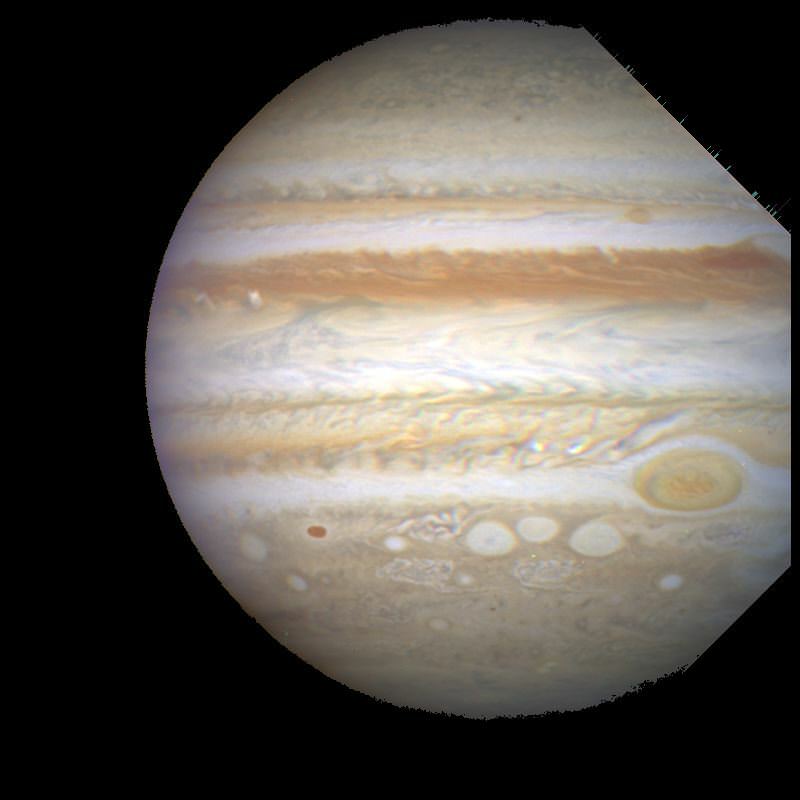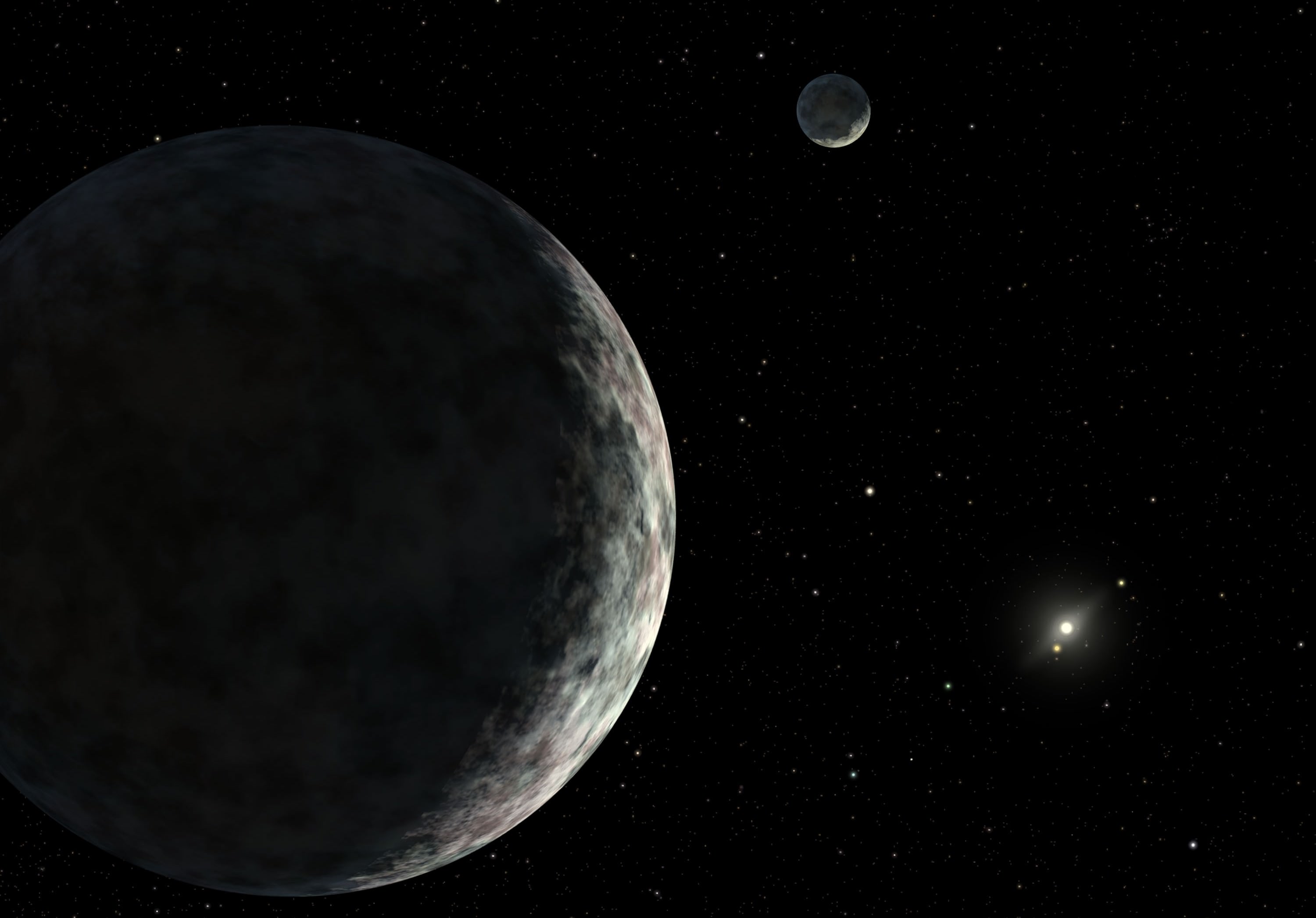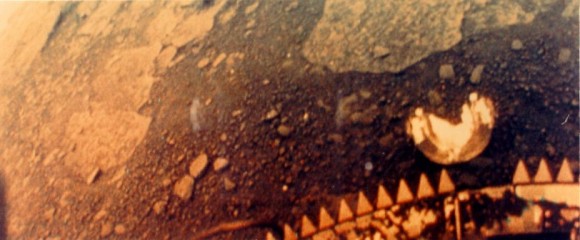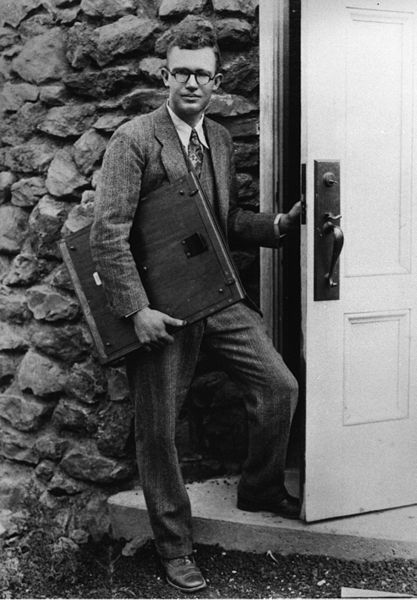[/caption]
Jupiter is the 5th planet in the Solar System, and by far the largest, containing 2.5 times the mass of the rest of the planets in the Solar System. Everything about planet Jupiter is big. It has the most moons in the Solar System, including the largest moon, Ganymede. It has the largest storm: the Great Red Spot; the most extreme gravity, and the biggest temperature extremes.
Because you can see Jupiter with the unaided eye, it’s impossible to say who actually discovered Jupiter. But it was Galileo Galilei who first turned his rudimentary telescope on Jupiter in 1610. Even with its dim optics, Galileo was able to make out the fact that Jupiter had 4 bright moons and bands across the planet. Since astronomers believed that everything orbited around the Earth, finding moons orbiting Jupiter threw the Earth-centered theory of the Universe into doubt. Even the smallest telescope will show you what Galileo saw.
Planet Jupiter orbits the Sun at an average distance of 779 million km (484 million miles), and it takes 4,333 Earth days to complete one orbit around the Sun; that’s almost 12 years. But Jupiter rotates once on its axis every 9 hours and 56 minutes. This high rotation speed has flattened out the planet, so that its equator is much further from the center of Jupiter than the poles. Jupiter’s also the largest plane in the Solar System, with an equatorial diameter of 142,984 kilometers (88,846 miles) – 11 times the diameter of Earth.
Jupiter has 318 times more mass than Earth, but it has a relatively low density; only 1/4 the density of Earth. It has such a low density because Jupiter is made up almost entirely of hydrogen with a little bit of helium. The upper atmosphere has tiny amounts of ammonia and other chemicals, which create the bands and clouds we see in photographs. The most familiar feature in Jupiter’s atmosphere is the planet’s Great Red Spot. This is a long-lived storm large enough to swallow up three planets the size of Earth.
It also has the largest number of moons in the Solar System: 63 at last count. The 4 largest moons are the Galilean moons, named after Galileo who discovered them. Ganymede measures 3,273 km across, and it’s the largest moon in the Solar System. Io orbits the closest of these moons and its undergoing almost constant volcanic activity because of tidal flexing being so close to Jupiter. Europa and Callisto probably have oceans of liquid water underneath thick shells of ice, and could be the home to exotic forms of life. Jupiter also has its own set of rings.
Seven spacecraft from Earth have made the journey to Jupiter: Pioneer 10, Pioneer-Saturn, Voyager 1, Voyager 2, Ulysses, Galileo, and New Horizons. Pioneer 10 was the first to reach the planet, making its flyby in 1972. The Galileo spacecraft actually went into orbit around Jupiter, to study the planet and its moons in great detail.
We’ve written many articles about Jupiter for Universe Today. Here’s an article about how Jupiter might protect us in the Solar System, and here’s an article about how you can see Jupiter in a telescope.
If you’d like more info on Jupiter, check out Hubblesite’s News Releases about Jupiter, and here’s a link to NASA’s Solar System Exploration Guide to Jupiter.
We’ve also recorded an episode of Astronomy Cast just about Jupiter. Listen here, Episode 56: Jupiter.
Reference:
NASA










